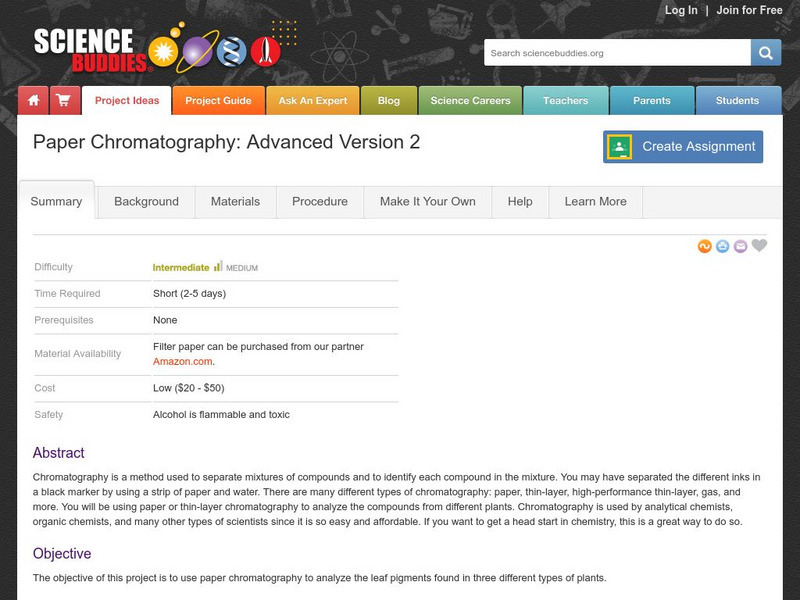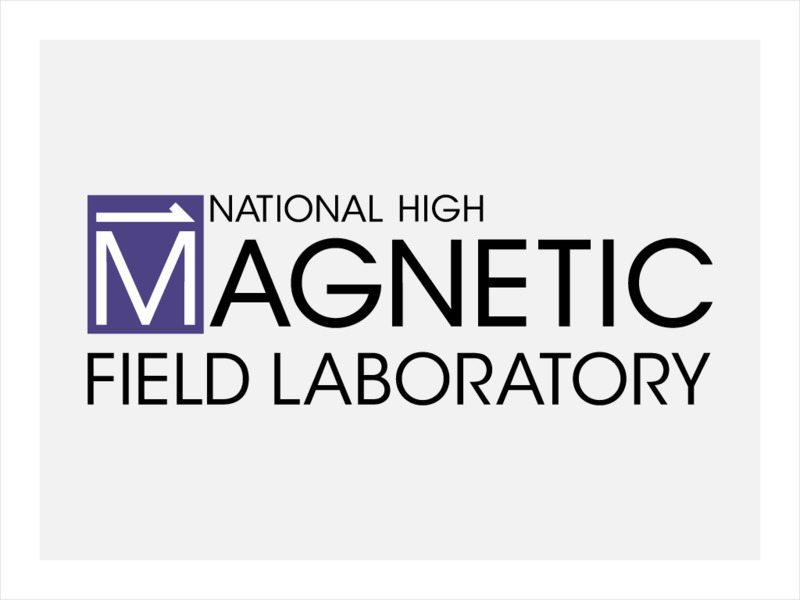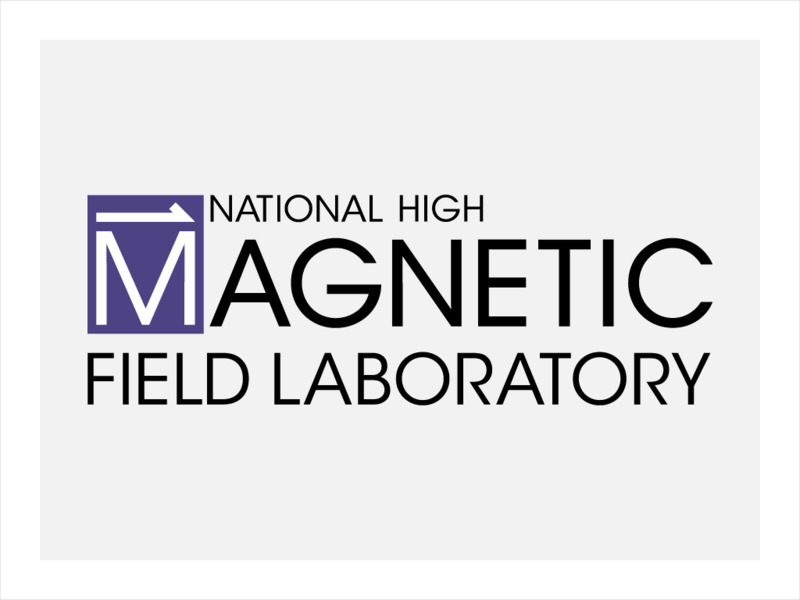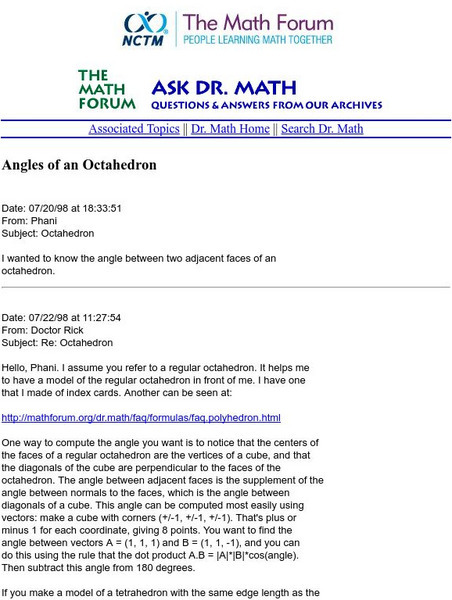Curated OER
Alchemy and Chemical Symbols
In this alchemy worksheet, students read about how alchemists kept their experiment notes in secret code. Students design their own secret code for the given elements. This worksheet has 2 problems to solve.
Curated OER
Daniell Cell
Students explain how Daniell cells work. In this electrochemistry lesson, students conduct a variety of experiments to explore the different types of cells. They create a model of Daniell cell.
Curated OER
Molecular Models Laboratory
Students use models to visualize molecular structures. Students read about Lewis dot structures, hybridization, and formal charge. Then students build and draw the molecules and ions given. Students complete 11 pre-lab questions and 4...
Curated OER
Dewey and Chemistry: The Water Cycle Revisited
Students undertake a series of experiments related to the water cycle. All experiments use John Dewey's experiential philosophy as their bases. Each lesson is clearly based on philosophy and attempts to be relevant.
Curated OER
Chemistry Far and Wide
In this chemistry worksheet, students fill in 10 blanks with the appropriate term, they determine if 4 statements are true or false, they match 6 terms with their definitions and they answer 3 questions. Topics include areas of chemistry...
Curated OER
Creek Restoration Project
Students gather and analyze scientific data from a local creek. Over weeks or months, students observe their local environment, collect water samples, and evaluate test results. Extension activities are suggested for evaluating...
Curated OER
International Phonetic Alphabet
In this translating learning exercise, students translate sentences in English to the International Phonetic Alphabet. Students translate 10 sentences.
Curated OER
Comprehension Quiz #1
In this comprehension quiz #1 learning exercise, students interactively complete 8 sentences based on the story given with immediate online feedback.
Curated OER
Forensic Detectives: Chemistry at Work
Students examine the different careers associated with chemistry and see how it is used everyday. In this forensic lesson plan students research a chemistry related career and write a presentation to give to the class.
Curated OER
Resources - A Reading Guide
In this resources instructional activity, students compare and contrast physical and chemical properties and changes. Students review the periodic table, pattern of atomic numbers and chemical reactivity. This instructional activity has...
Curated OER
Ozone Pollution: Smog Alert
Students simulate the development of smog. They discover how it forms naturally in nature. They read news articles about the ozone and pollution. They discuss what they can do to lower the pollution they generate.
National High Magnetic Field Laboratory
Magnet Academy: Paul Lauterbur
Chemist Paul Lauterbur pioneered the use of nuclear magnetic resonance (NMR) for medical imaging. He developed a technique, now known as magnetic resonance imaging (MRI), in the early 1970s that involves the introduction of gradients in...
Science Buddies
Science Buddies: Paper Chromatography: Advanced Version 2
Chromatography is a method used to separate mixtures of compounds and to identify each compound in the mixture. You may have separated the different inks in a black marker by using a strip of paper and water. There are many different...
University of Alberta
The University of Alberta: Separation of Acids, Bases and Neutral Compounds
As a chemist, you will learn to deal with complex mixtures of many compounds. In this interactive activity, you will learn the basis of separations using acid-base extraction. In the virtual lab you will simulate an actual experiment and...
National High Magnetic Field Laboratory
Magnet Academy: Svante Arrhenius
Svante Arrhenius was born in Vik, Sweden, and became the first native of that country to win the Nobel Prize. The award for chemistry was bestowed to him in honor of his theory of electrolytic dissociation. Arrhenius also developed the...
National High Magnetic Field Laboratory
Magnet Academy: Humphry Davy
Humphry Davy was a pioneer in the field of electrochemistry who used electrolysis to isolate many elements from the compounds in which they occur naturally. Electrolysis is the process by which an electrolyte is altered or decomposed via...
Houghton Mifflin Harcourt
Harcourt: Biographies: Rosalind Franklin
This is a fantastic biography of Rosalind Franklin. It has links to both additional information and images to help illustrate the biography.
National High Magnetic Field Laboratory
Magnet Academy: Peter Debye
Peter Debye carried out pioneering studies of molecular dipole moments, formulated theories of magnetic cooling and of electrolytic dissociation, and developed an X-ray diffraction technique for use with powdered, rather than...
Curated OER
Wikipedia: Natl Historic Landmarks in Massachusetts: Theodore W. Richards House
Theodore William Richards (1868-1928) was considered the foremost experimental chemist of his time. He won the Nobel prize for his role in determine the atomic weights of many elements. This house was built in 1900 with design input from...
National Council of Teachers of Mathematics
The Math Forum: Angles of an Octahedron
This question and answer site from The Math Forum with Dr. Math discusses the angle between two adjacent faces of an octahedron. Links are also provided for additional information on related subjects.
Curated OER
Smithsonian Libraries: Jean Antoine Claude Chaptal (1756 1832)
A portrait of Jean-Antoine-Claude Chaptal from the Dibner Library of the History of Science and Technology, made available through the Smithsonian Institution's Scientific Identity Collection.
Curated OER
Smithsonian Libraries: Scientific Identity: Humphry Davy (1778 1829)
A portrait of Humphry Davy from the Dibner Library of the History of Science and Technology, made available through the Smithsonian Institution's Scientific Identity Collection.
Curated OER
Smithsonian Libraries: Scientific Identity: Michael Faraday (1791 1867)
A portrait of Michael Faraday from the Dibner Library of the History of Science and Technology, made available through the Smithsonian Institution's Scientific Identity Collection.





















